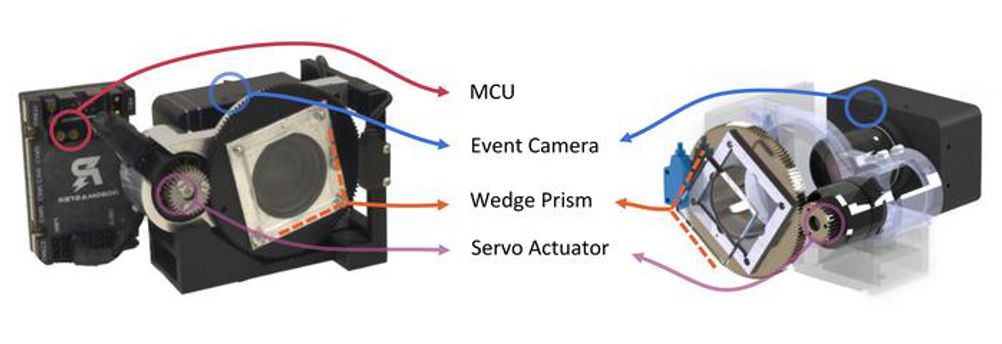Developed by a team led by University of Maryland (UMD) computer scientists, the camera system mimics the involuntary movements used by the human eye to maintain clear and stable vision.
The team’s prototyping and testing of the camera - called the Artificial Microsaccade-Enhanced Event Camera (AMI-EV) – is detailed in Science Robotics.
“Event cameras are a relatively new technology better at tracking moving objects than traditional cameras, but today’s event cameras struggle to capture sharp, blur-free images when there’s a lot of motion involved,” said the paper’s lead author Botao He, a computer science Ph.D. student at UMD. “It’s a big problem because robots and many other technologies - such as self-driving cars - rely on accurate and timely images to react correctly to a changing environment. So, we asked ourselves: how do humans and animals make sure their vision stays focused on a moving object?”
The answer was microsaccades, which are small and quick eye movements that involuntarily occur when a person tries to focus their view. Through these minute yet continuous movements, the human eye can keep focus on an object and its visual textures - such as colour, depth and shadowing - accurately over time.

According to UMD, the team replicated microsaccades by inserting a rotating prism inside the AMI-EV to redirect light beams captured by the lens. The continuous rotational movement of the prism simulated the movements naturally occurring within a human eye, allowing the camera to stabilise the textures of a recorded object just as a human would. The team then developed software to compensate for the prism’s movement within the AMI-EV to consolidate stable images from the shifting lights.
“Our eyes take pictures of the world around us, and those pictures are sent to our brain, where the images are analysed. Perception happens through that process and that’s how we understand the world,” said study co-author Professor Yiannis Aloimonos, director of the Computer Vision Laboratory at the University of Maryland Institute for Advanced Computer Studies (UMIACS). “When you’re working with robots, replace the eyes with a camera and the brain with a computer. Better cameras mean better perception and reactions for robots.”
In early testing, AMI-EV was able to capture and display movement accurately in a variety of contexts, including human pulse detection and rapidly moving shape identification.
The researchers also found that AMI-EV could capture motion in tens of thousands of frames per second, outperforming most typically available commercial cameras, which capture 30 to 1000 frames per second on average.
The team believes this smoother and more realistic depiction of motion could be pivotal in applications ranging from creating more immersive augmented reality experiences and better security monitoring to improving how astronomers capture images in space.











McMurtry Spéirling defies gravity using fan downforce
Ground effect fans were banned from competitive motorsport from the end of the 1978 season following the introduction of Gordon Murray's Brabham...